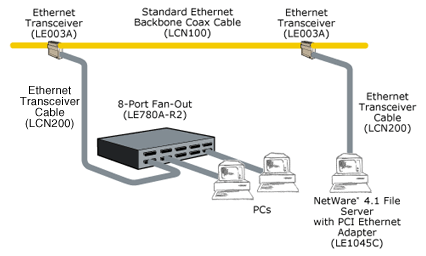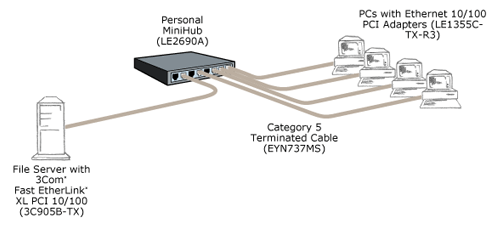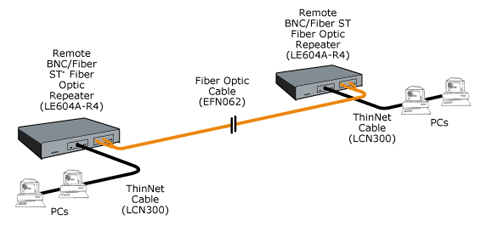|
Services |
If you have an existing network, there’s a 90% chance it’s Ethernet. If you’re installing a new network, there’s a 98% chance it’s Ethernet— the Ethernet standard is the overwhelming favorite network standard today. Ethernet was developed by Xerox®, DEC™, and Intel® in the mid-1970s as a 10-Mbps (Megabits per second) networking protocol—very fast for its day—operating over a heavy coax cable (Standard Ethernet). Today, although many networks have migrated to Fast Ethernet (100 Mbps) or even Gigabit Ethernet (1000 Mbps), 10-Mbps Ethernet is still in widespread use and forms the basis of most networks. Ethernet is defined by international standards, specifically IEEE 802.3. It enables the connection of up to 1024 nodes over coax, twisted-pair, or fiber optic cable. Most new installations today use economical, lightweight cables such as Category 5 unshielded twisted-pair cable and fiber optic cable. How Ethernet
Works Ethernet uses a broadcast access method called Carrier Sense Multiple Access/Collision Detection (CSMA/CD) in which every computer on the network “hears” every transmission, but each computer “listens” only to transmissions intended for it. Each computer can send a message anytime it likes without having to wait for network permission. The signal it sends travels to every computer on the network. Every computer hears the message, but only the computer for which the message is intended recognizes it. This computer recognizes the message because the message contains its address. The message also contains the address of the sending computer so the message can be acknowledged. If two computers send messages at the same moment, a “collision” occurs, interfering with the signals. A computer can tell if a collision has occurred when it doesn’t hear its own message within a given amount of time. When a collision occurs, each of the colliding computers waits a random amount of time before resending the message. The process of collision detection and
retransmission is handled by the Ethernet adapter itself and doesn’t
involve the computer. The process of collision resolution takes only a
fraction of a second under most circumstances. Collisions are normal and
expected events on an Ethernet network. As more computers are added to the
network and the traffic level increases, more collisions occur as part of
normal operation. However, if the network gets too crowded, collisions
increase to the point where they slow down the network considerably. Standard
(Thick) Ethernet (10BASE5)
Thin Ethernet
(ThinNet) (10BASE2)
Twisted-Pair
Ethernet (10BASE-T)
Fiber Optic
Ethernet (10BASE-FL, FOIRL)
|
|
| ► | Software Development | |
| ► | Web Based Notification and Messaging | |
| ► | Network Design, Management, and Security | |
| ► | Network Backup and Continuity Planning | |
| ► | Remote Site and Incident Location Networking | |
| ► | Remote Access Solutions - VPNs | |
| ► | Database Server Management | |
| ► | Wireless Data Solutions | |
| ► | Rogue Wireless Data Detection | |
| ► | Firewall and Intrusion Detection Solutions | |
| ► | Network and Data Security | |
| ► | Automation Project Management | |
| ► | Web & Email Group Survey Systems | |
| ► | Data Mining - Data Analysis - Geocoding | |
| ► | Technology Consulting and Education Services | |
| ► | Seminar and Conference Organization and Management | |
| Products / Downloads | ||
|
► |
Software | |
|
► |
Hardware | |
|
► |
Policy Samples | |
|
Articles ► Articles Presentations |
||
| ► | Presentations | |
| Technical Documents | ||
| ► | Ethernet Overview | |
| ► | High Speed Networking | |
| ► | Frame Relay Overview | |
| ► | Fiber Optics | |
| ► | Routers and Bridges | |
| ► | Digital Subscriber Lines (xDsL) | |
| ► | Category 5 Cabling and Beyond | |
| ► | Serial Data Transmission | |
| ► | Universal Service Ordering Code (USOC) | |
| ► | Universal Serial Bus (USB) and Firewire | |
| ► | dBm to Watt Conversion | |
| Company Information | ||
| ► | About CPCS Technologies | |
| ► | Contact Information | |
| Links / Resources | ||
|
► |
Additional Resources | |
|
|
||



